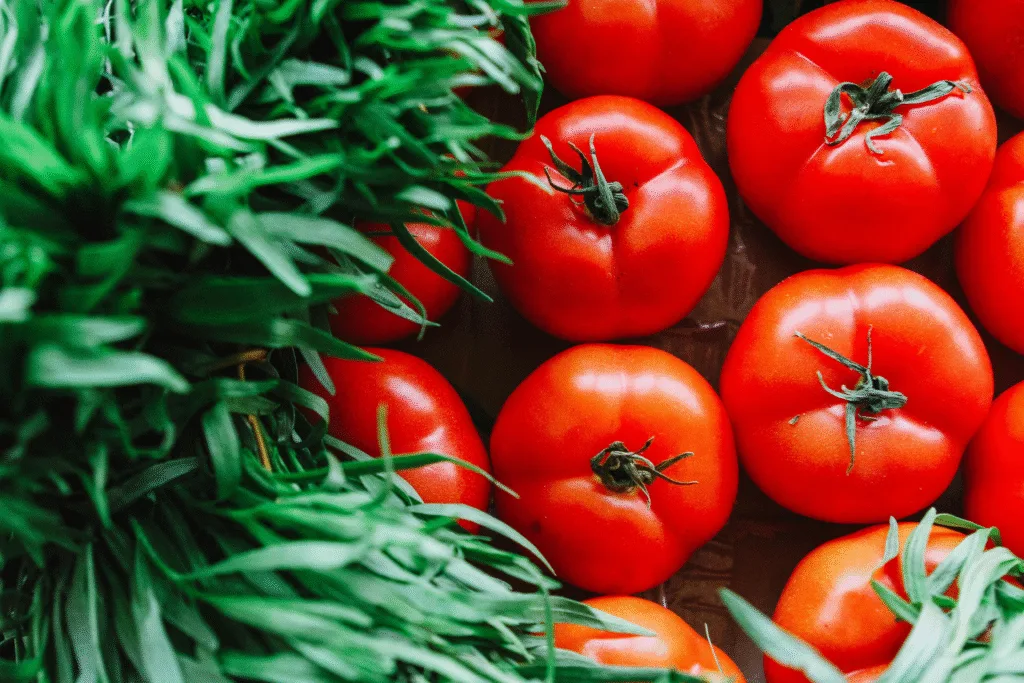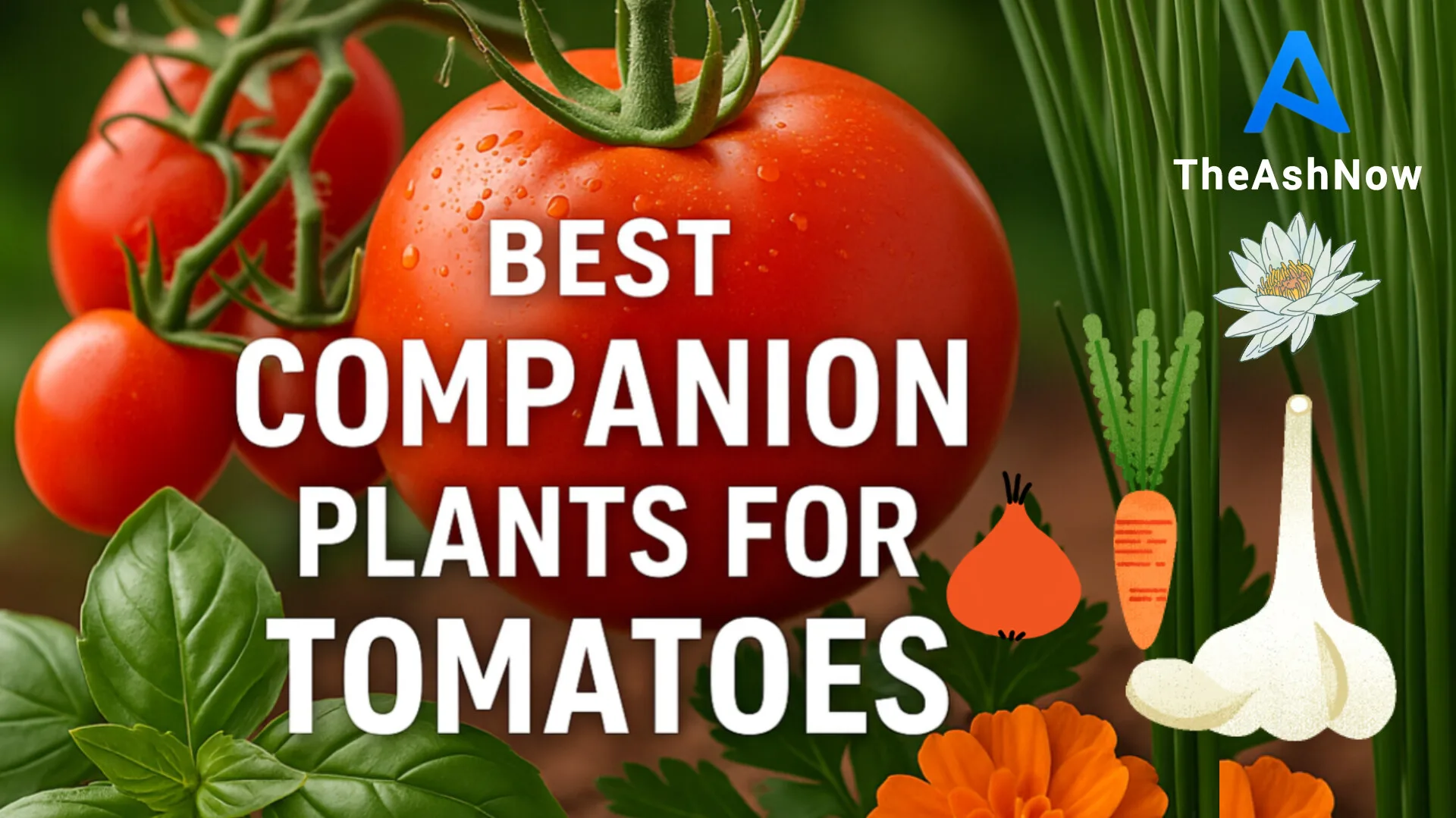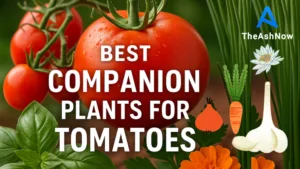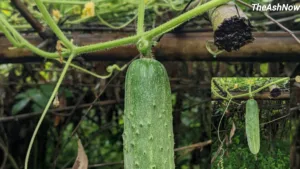Best Companion Plants for Tomatoes
Tomatoes are the crown jewels of home gardens in the United States, the United Kingdom, Canada, and Australia. But growing juicy, vibrant tomatoes isn’t just about good soil and sunshine—planting the right companions nearby can supercharge your harvest.
Companion planting is an age-old gardening technique backed by both tradition and modern science. The right plants can deter harmful insects, enrich the soil, and enhance the flavor and yield of tomatoes.
Let’s explore the top companion plants for tomatoes, backed by research and trusted by master gardeners across Tier 1 countries.
Table of Contents
🌿1. Basil – The Ultimate Tomato Buddy
Why It Works:
- Repels thrips, mosquitoes, and tomato hornworms.
- Enhances tomato flavor (yes, it’s not a myth!).
How to Plant:
- Plant basil 12 inches away from the tomato stems.
- Keep trimming to prevent flowering for more leaf production.
Pro Tip: A tomato-basil combo is a win for both the kitchen and garden.

🌼2. Marigolds – The Natural Pest Police
Why It Works:
- Deters nematodes, whiteflies, and aphids.
- Attracts pollinators and beneficial insects like ladybugs.
How to Plant:
- Plant French marigolds around tomato borders.
- Replace every season for the best pest resistance.
USA Study: A Cornell University trial found marigolds reduced nematode populations by up to 90%.
🧄3. Garlic – The Underground Protector
Why It Works:
- Repels red spider mites and aphids.
- Its sulfur compounds have antibacterial and antifungal properties.
How to Plant:
- Interplant cloves between tomato rows in early spring.
Bonus: Garlic improves soil health for the following season.
🌱4. Chives and Onions – The Aromatic Guards
Why It Works:
- Keep aphids, carrot rust flies, and Japanese beetles away.
- Improve tomato flavor and deter fungal infections.
How to Plant:
- Use as a border plant around tomatoes.
- Avoid overwatering; onions love dry roots.
🥬5. Lettuce – The Living Mulch
Why It Works:
- Shade the soil to retain moisture.
- Slows weed growth under the tomato canopy.
How to Plant:
- Space lettuce around the base of tomato plants.
- Opt for loose-leaf varieties like ‘Buttercrunch’.
Best For: Small raised beds or container gardens.
🪻6. Borage – The Bee Magnet
Why It Works:
- Attracts bees for better pollination.
- Deters tomato hornworms.
How to Plant:
- Space 18–24 inches from tomatoes.
- Allow room for sprawling habit.
Did You Know? Borage also adds trace minerals to the soil that benefit tomatoes.
🌾7. Carrots – Root Zone Friends
Why It Works:
- Loosens soil, improving aeration and root growth.
- Doesn’t compete heavily for nutrients.
How to Plant:
- Sow between young tomato plants.
- Harvest early to avoid crowding as tomatoes grow.
Caution: Don’t let carrots grow too close to mature tomato roots.
🧅8. Asparagus – The Perennial Pal
Why It Works:
- Tomatoes repel asparagus beetles.
- Asparagus roots grow deep, avoiding competition.
How to Plant:
- Ideal for a perennial-companion mixed bed.
- Space appropriately for long-term growth.
🌸9. Calendula – The Trap Crop
Why It Works:
- Attracts aphids and whiteflies away from tomatoes.
- Improves biodiversity.
How to Plant:
- Interplant sporadically around tomatoes.
- Deadhead regularly for continuous blooms.
🌾10. Parsley – The Beneficial Insect Magnet
Why It Works:
- Attracts hoverflies and predatory wasps that eat tomato pests.
- Doesn’t compete for space or nutrients.
How to Plant:
- Tuck parsley between tomatoes or along garden edges.
❌Plants to Avoid Near Tomatoes
Certain plants do more harm than good. Avoid planting the following near tomatoes:
| Inhibits the growth of tomatoes | Why to Avoid |
|---|---|
| Corn | Attracts tomato fruitworm |
| Potatoes | Spread blight and compete for nutrients |
| Fennel | Inhibits growth of tomatoes |
| Cabbage family | Competes heavily and attracts similar pests |
| Dill (mature) | Stunts tomato growth after flowering |
🇺🇸 Companion Planting Trends in Tier 1 Countries
In the US, UK, and Canada, organic gardening is on the rise:
- Over 35% of US gardeners now use companion planting as part of their sustainability efforts.
- British gardeners pair tomatoes with herbs like thyme, basil, and sage for both pest control and culinary convenience.
- Australian and Canadian growers report fewer pest outbreaks when using flower-based companions like borage and marigolds.
🌟Expert Tips for Success
✅ Rotate crops yearly to reduce soil-borne diseases.
✅ Water consistently to prevent cracking and blossom end rot.
✅ Use raised beds or containers for easy integration of companions.
✅ Mulch to retain moisture and regulate soil temperature.
✅ Use trellises to keep tomatoes off the ground and maximize space for companions.
🔟Most Googled FAQs (With Answers)
1. What is the best plant to grow with tomatoes?
Basil and marigolds are considered the top companions for tomatoes due to pest control and flavor enhancement.
2. Can I plant cucumbers next to tomatoes?
It’s not recommended. Both are heavy feeders and susceptible to similar diseases.
3. Is it good to plant peppers near tomatoes?
Yes, both thrive in similar conditions and can grow well together if spaced properly.
4. Do tomatoes and onions grow well together?
Yes! Onions deter pests like aphids and don’t compete aggressively with tomatoes.
5. Should I plant flowers with tomatoes?
Absolutely! Flowers like marigolds, calendula, and borage attract pollinators and beneficial insects.
6. Can I grow beans near tomatoes?
Avoid bush beans and pole beans—they may attract pests and compete for nutrients.
7. What should I not plant with tomatoes?
Avoid corn, potatoes, cabbage, and fennel.
8. Can tomatoes and carrots grow together?
Yes, as long as carrots are harvested early to prevent overcrowding.
9. Does companion planting work?
Yes, both scientific studies and gardeners experience confirm its effectiveness in reducing pests and increasing yield.
10. Do companion plants affect tomato flavor?
Yes. Basil and chives are believed to subtly enhance the flavor of tomatoes.
✅ Final Thoughts
Whether you’re gardening in the suburbs of Chicago, the countryside of Kent, or the sunny coast of Sydney, companion planting is a smart, sustainable way to grow better tomatoes.
Choose a mix of pest-repelling herbs, bee-attracting flowers, and non-competitive veggies to create a balanced tomato ecosystem in your garden.
🛒 Ready to Start?
Explore your local garden center or online nurseries for:
- Organic basil seeds
- French marigold seedlings
- Borage starter kits
- Companion planting charts
🌟 Take the Next Step:
Want more gardening wisdom like this? Subscribe to TheAshNow’s newsletter and follow us for the best gardening guides tailored for Tier 1 gardeners.







